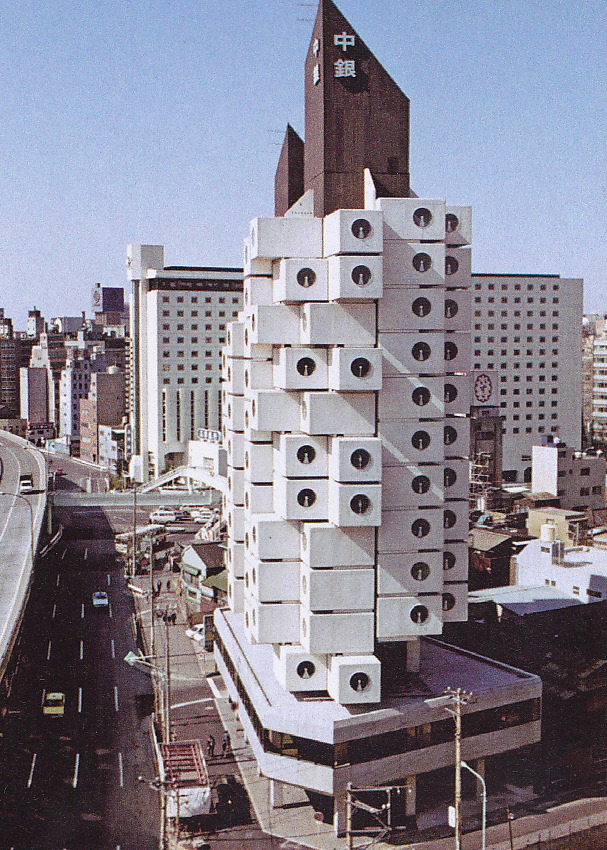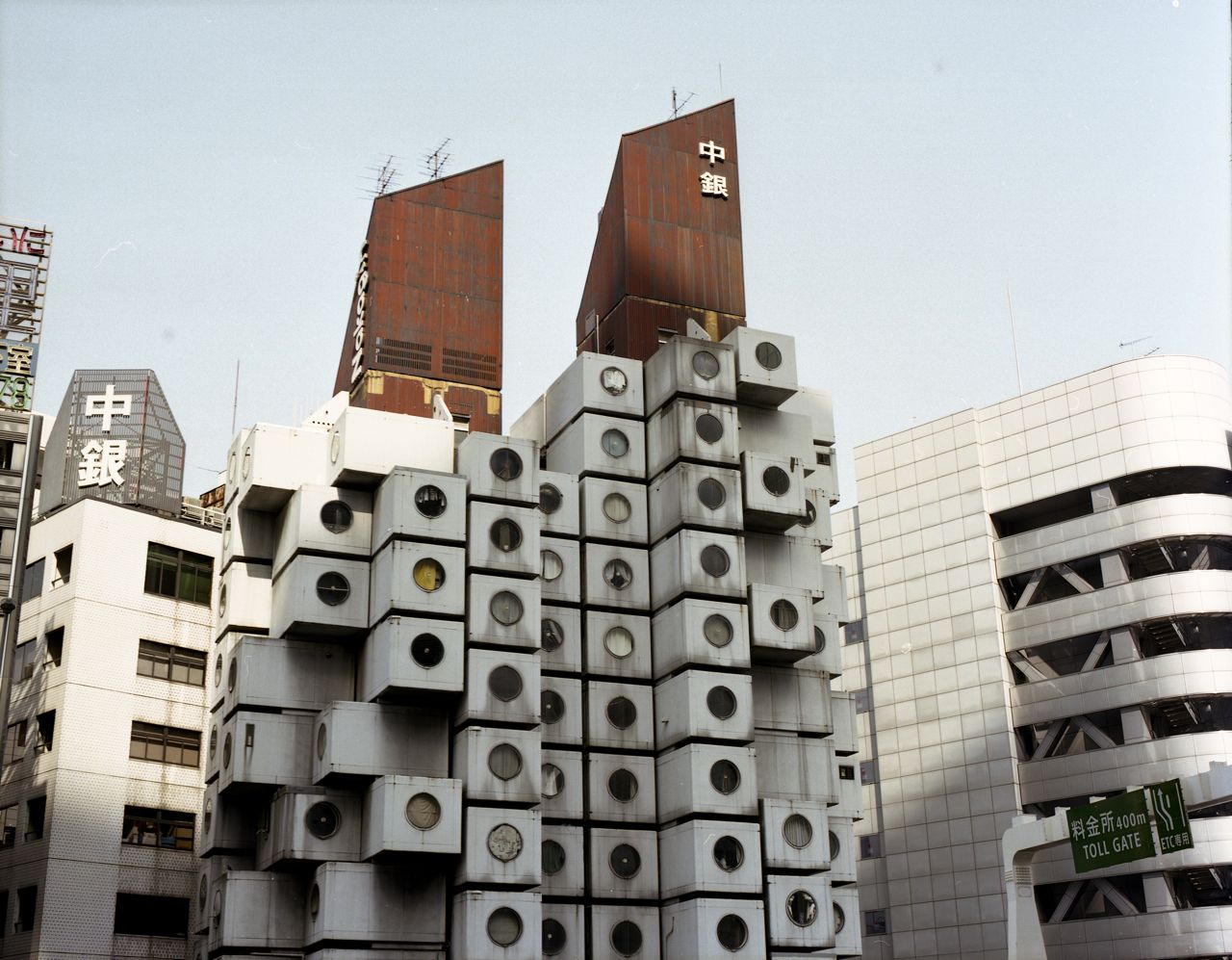Main author
Michael BrooksNakagin Capsule Tower
The Nakagin Capsule Tower in Tokyo, Japan is a 14-storey tower consisting of 140 individual capsule units. Designed by the architect Kurokawa Kisho and constructed in 1972, the tower was intended to serve as a prototype for a new type of functional urban accommodation, and is seen as one of the foremost examples of the metabolist architecture movement that developed in post-war Japan.
The idea behind metabolism was that buildings developed, apparently organically, in response to their environment, with the ability to be adaptable. This idea was evident in the minimalist design of the Nakagin Capsule Tower in which individual capsules that were manufactured offsite were attached to two interconnected concrete towers. The capsules could be replaced and modified as required, with mixed use functionality including living and office space.
Unfortunately, like many ‘flexible’ buildings, this adaptability was never used. Despite the original intention, none of the capsules were ever replaced and the tower eventually fell into disrepair. In recent years it has faced threats of demolition as renovation plans have failed, although it has started opening for access to tourists through sites such as Airbnb.
Despite setbacks, the tower remains a striking futurist design for urban living and the world’s first example of capsule architecture.
[edit] 2021 update
The Nakagin Capsule Tower was sold to the landowner in 2021. Its fate continues to be in jeopardy, due to structural issues related to seismic requirements.
[edit] Related articles on Designing Buildings Wiki
- 30 St. Mary Axe.
- Architectural styles.
- Building of the week series.
- Fuji TV Building, Tokyo.
- Gate Tower Building, Osaka.
- Geodesic dome.
- Habitat 67.
- Megastructure..
- Metabolism.
- Ministry of Transportation Building, Georgia.
- Robot Building, Bangkok.
- Skyscraper.
- Tallest buildings in the world.
- The Bierpinsel, Berlin.
- The history of fabric structures.
- Trellick Tower.
- Unusual building design of the week series.
[edit] External references
- Pingmag - Nakagin Capsule Tower
Featured articles and news
Latest Build UK Building Safety Regime explainer published
Key elements in one short, now updated document.
UKGBC launch the UK Climate Resilience Roadmap
First guidance of its kind on direct climate impacts for the built environment and how it can adapt.
CLC Health, Safety and Wellbeing Strategy 2025
Launched by the Minister for Industry to look at fatalities on site, improving mental health and other issues.
One of the most impressive Victorian architects. Book review.
Common Assessment Standard now with building safety
New CAS update now includes mandatory building safety questions.
RTPI leader to become new CIOB Chief Executive Officer
Dr Victoria Hills MRTPI, FICE to take over after Caroline Gumble’s departure.
Social and affordable housing, a long term plan for delivery
The “Delivering a Decade of Renewal for Social and Affordable Housing” strategy sets out future path.
A change to adoptive architecture
Effects of global weather warming on architectural detailing, material choice and human interaction.
The proposed publicly owned and backed subsidiary of Homes England, to facilitate new homes.
How big is the problem and what can we do to mitigate the effects?
Overheating guidance and tools for building designers
A number of cool guides to help with the heat.
The UK's Modern Industrial Strategy: A 10 year plan
Previous consultation criticism, current key elements and general support with some persisting reservations.
Building Safety Regulator reforms
New roles, new staff and a new fast track service pave the way for a single construction regulator.
Architectural Technologist CPDs and Communications
CIAT CPD… and how you can do it!
Cooling centres and cool spaces
Managing extreme heat in cities by directing the public to places for heat stress relief and water sources.
Winter gardens: A brief history and warm variations
Extending the season with glass in different forms and terms.
Restoring Great Yarmouth's Winter Gardens
Transforming one of the least sustainable constructions imaginable.

























